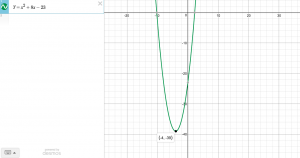The Taking Tree - Manroop Thandi The maple tree is dying, Once red and beautiful With a strong thick trunk, Took a sip of the bittersweet Flight away from life, In the midst of removing every dried-up leaf, Giving the other roots grief Disregarding its surroundings. The maple tree is dying, This tree is drowned in an anesthetic That is reactive but not proactive, The drink that causes sad happiness Trusting a true trick. creating loneliness. The maple tree is dying, The dark day has come, Now unable to see It will never breathe The dagger strikes the tree , as it falls down gloomily Quietly and quickly as fast as when it started blooming, it finally acknowledges the world it didn’t get to see. the maple tree is dying.
Composition:
People often rely on drugs and alcohol as a vanity away from problems but fail to acknowledge the repercussions of such actions. In the poem The Taking Tree, Manroop Thandi displays the theme of using drugs/alcohol to hide pain. The Taking Tree is a free verse and open poem. The speaker is someone who is close with someone who has experienced drug abuse before. The poem is an extended metaphor about someone who abuses substances, this is shown in line 10 “this tree is drowned in an anesthetic”. The anesthetic represents a numbing agent that limits pain but only lasts for a short amount of time, this could represent a drug or alcohol.
Thandi’s choice of using maple trees as a comparison to a person could be because a maple tree is very vibrant but after constantly misusing substances it is dead and has lost its life. In line three Manroop says “with a strong thick trunk” this could be representing the strong mind it began with and how substances started destroying its solid roots (mind). The “dried-up leaves” is a metaphor for problems. The tree wants to remove all of the things that bring down the vibrancy of the tree. The line “of removing every dried-up leaf” is also a hyperbole because removing all problems from a one’s life is impossible. Line 8 shows that drug abusers do not know the trail that substance abuse causes and how much it emotionally affects others. The line, “this tree is drowned in an anesthetic” is a hyperbole because the tree is over using this drug for tranquility. Line 11 “that is reactive but not proactive” represents that the drugs the person is taking is only a solution for a limited time but in the long run it will never go away. The poet also shows that the ultimate result in abusing drugs instead of facing problems will result in in loneliness, “trusting a true trick. Creating loneliness”. In lines 21-22 the poet compares the day the tree bloomed to the day it is dying by using a simile. This comparison is made because when the tree bloomed it was excited to grow, similarly, when it dies it will finally have peace. Thandi also uses the symbol of darkness and a dagger to represent death. There are also a couple of examples of personification in the poem. In line 3 Thandi says, “took a sip of the bittersweet” this is personification because trees cannot sip.
Thandi also uses sound devices such as repetition, alliteration, cacophony and oxymorons. Throughout the poem, Thandi repeats the line “the maple tree is dying” to emphasize the effect of the drug abuse on the people surrounding the abuser. In line 13 Thandi says, “trusting a true trick” this is alliteration because of the repeating “tr” sounds. In line 12, Thandi uses an oxymoron “the drink that causes sad happiness”, this represents a faux experience. In the hopes of reviving everything, the person has become depressed. The person fails to realize that this drug is not causing happiness but affecting everything around it. Line 13 is also an oxymoron because “true trick” contradict each other, this is because the person using the drugs believes that this is a real solution but later figures out it was all a trick.The person abusing drugs believes that drugs will solve all problems but later realizes that life with the drugs/alcohol created many more problems rather than solving them. The poet also uses cacophony in line 3 by repeating the “k” sound and in line 21 by repeating the “q” sound.
The poem The Taking Tree use many figurative devices to show the path someone going through drug abuse. This poem is insightful to the human condition because many people deal with substance abuse in attempts to hide pain but fail to recognize the effects of these actions.











